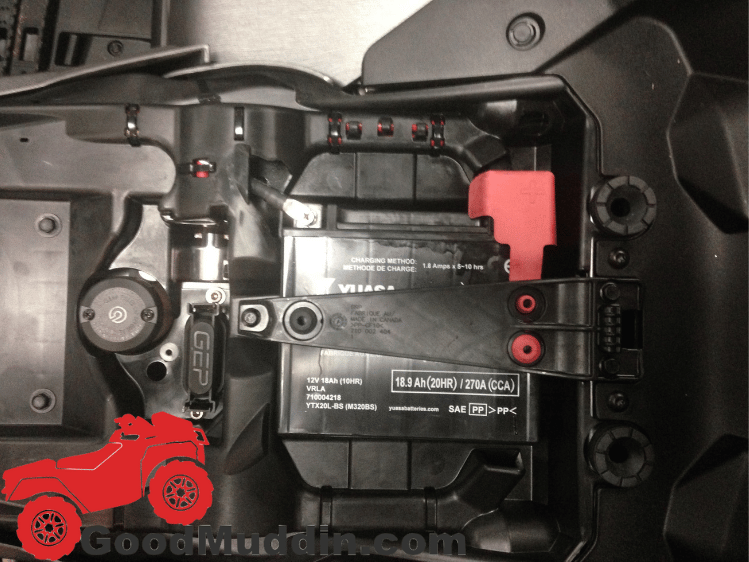The most common reason people install a battery disconnect switch is to prevent their batteries from dying while the vehicle sits for a long time.
Although this may be the most common reason people install them, and it can work in some situations, it may not be actually solving the problem.
If you’re using one to stop a parasitic or slight power draw from your battery, then you need to investigate what’s causing it. Often, the culprits are aftermarket parts, a bad ground, damaged wires, or other factors that can cause a slight power draw. These issues need to be fixed, or the problem will worsen.
Also, don’t confuse the battery dying from inactivity with a parasitic power draw. Lead-acid batteries will go flat and die if you’re not using them for months, and adding a battery switch will not resolve this issue. What will help is using a solar battery charger or a smart charger to keep the battery active and in good condition.
The Reasons To Get The Battery Switch
While a power switch should not be used in some situations, there are still a few reasons you may need one that I’ll list below.
- Theft Prevention – You’ll be amazed how a simple battery-switch can slow down someone trying to steal your machine. Most people know where the key goes and the kill-switch, but you can hide the battery-switch. You can even buy battery-switches that are removable, like a key (ad), and will need to be inserted to start the engine.
- Maintenance – When working on a machine, you should disconnect the battery just to be extra safe. With a battery-switch, it’s super easy to kill all power to the machine, so you can work on it, but removing the battery is even better.
- Reset Problems – Sometimes, problems can be fixed with disconnecting the battery for a few minutes. As they get more complex with computers, the simple solutions of turning it off and back on again will resolve many odd problems.
- Safety – You may never need to, but if something goes wrong, a wire touching the wrong area and heating up, or for whatever reason you need to turn the engine off, you can kill all power with the battery-switch.
- Aftermarket Parts – Some aftermarket parts don’t tie into the accessory electrical or there is no more room, so you’ll have to hook directly to the battery. This should be the last resort thing, but it may be the only option, so a battery-switch that kills power to everything is a must.
- Keeps Others From Turning The Quad On – Whether it kids or your buddy, a master switch that kills all battery power will keep others from messing with your machine. Kids like to turn switches and keys they can reach, and with a battery-switch, you can keep them from turning your lights on while you’re away, which drains the battery.
- Protects From Mice And Bugs – Mice love to eat rubber and plastic, which ATVs wiring has a lot of. It’s not common, but mice can eat the wrong wire, ground themselves to the metal of the frame, and catch on fire. A battery-switch can stop this from happening.
- Prevents Battery Drain – As covered, using a battery-switch to keep your battery from dying is not always the best answer, but in some situations it’s a must.
Placing The Battery Switch
Ideally, you want to install the battery switch near the battery.
The switch becomes your new battery connector for one side, and you tie everything off that, if not, you defeat the whole point of having one.
You want to avoid long wires, as the more wires you have, the more resistance and more hard it is to start and the more warning lights you’ll run into.
Battery-Switch Considerations
When getting a battery switch, there are a few things to consider.
- Amp rating on the switch.
- Keep it dry.
- Use dielectric grease on the connections.
- Cover the connections.
- Avoid touching the ground or metal parts of the 4-wheeler when working near the switch.
- Avoid hot areas.
Safety and understanding the surroundings of where you keep the battery switch is important. Not taking these things into consideration can cause a fire, keep your ATV from working, or even worse.
